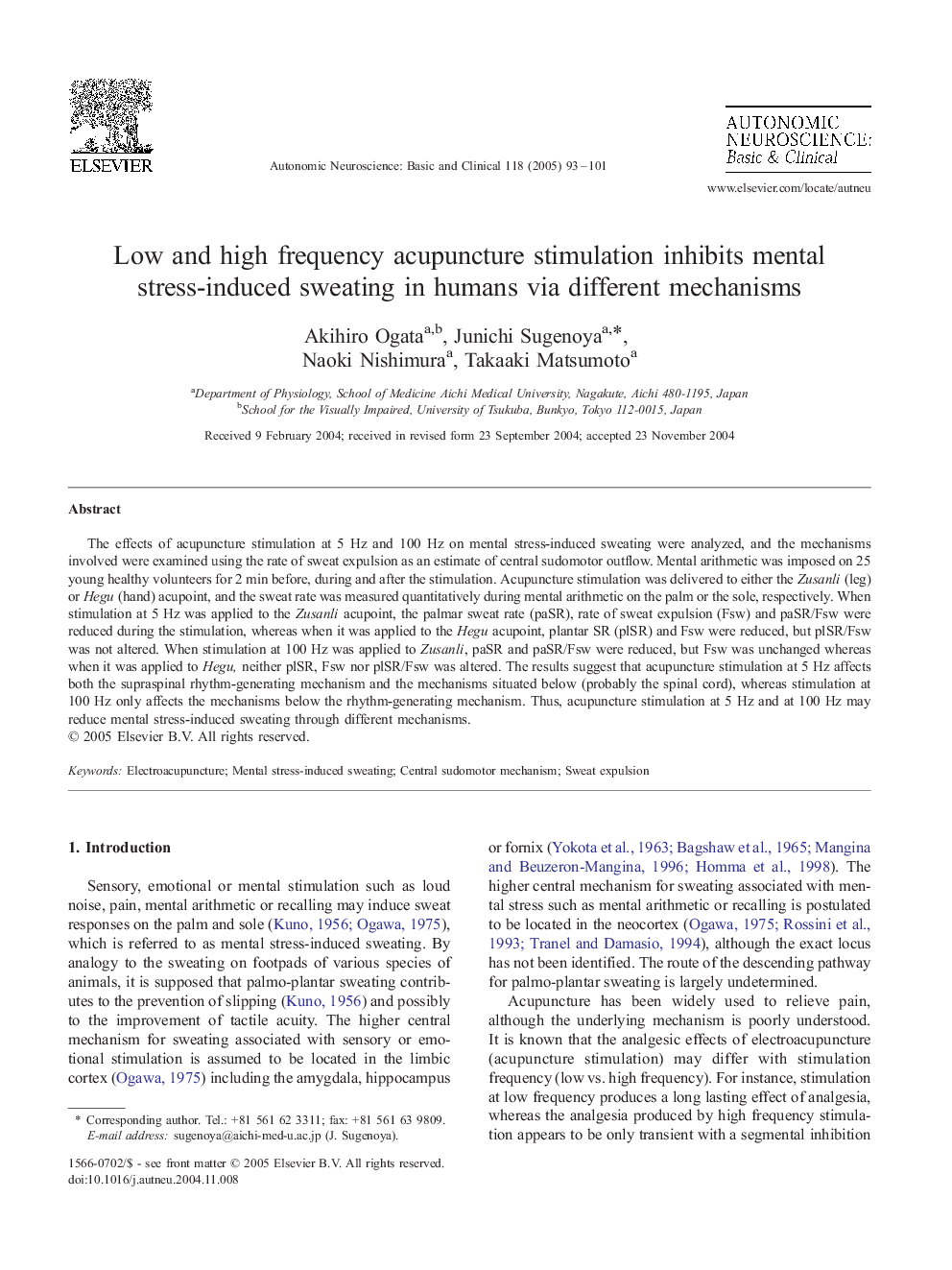| Article ID | Journal | Published Year | Pages | File Type |
|---|---|---|---|---|
| 9186587 | Autonomic Neuroscience | 2005 | 9 Pages |
Abstract
The effects of acupuncture stimulation at 5 Hz and 100 Hz on mental stress-induced sweating were analyzed, and the mechanisms involved were examined using the rate of sweat expulsion as an estimate of central sudomotor outflow. Mental arithmetic was imposed on 25 young healthy volunteers for 2 min before, during and after the stimulation. Acupuncture stimulation was delivered to either the Zusanli (leg) or Hegu (hand) acupoint, and the sweat rate was measured quantitatively during mental arithmetic on the palm or the sole, respectively. When stimulation at 5 Hz was applied to the Zusanli acupoint, the palmar sweat rate (paSR), rate of sweat expulsion (Fsw) and paSR/Fsw were reduced during the stimulation, whereas when it was applied to the Hegu acupoint, plantar SR (plSR) and Fsw were reduced, but plSR/Fsw was not altered. When stimulation at 100 Hz was applied to Zusanli, paSR and paSR/Fsw were reduced, but Fsw was unchanged whereas when it was applied to Hegu, neither plSR, Fsw nor plSR/Fsw was altered. The results suggest that acupuncture stimulation at 5 Hz affects both the supraspinal rhythm-generating mechanism and the mechanisms situated below (probably the spinal cord), whereas stimulation at 100 Hz only affects the mechanisms below the rhythm-generating mechanism. Thus, acupuncture stimulation at 5 Hz and at 100 Hz may reduce mental stress-induced sweating through different mechanisms.
Keywords
Related Topics
Life Sciences
Neuroscience
Cellular and Molecular Neuroscience
Authors
Akihiro Ogata, Junichi Sugenoya, Naoki Nishimura, Takaaki Matsumoto,
